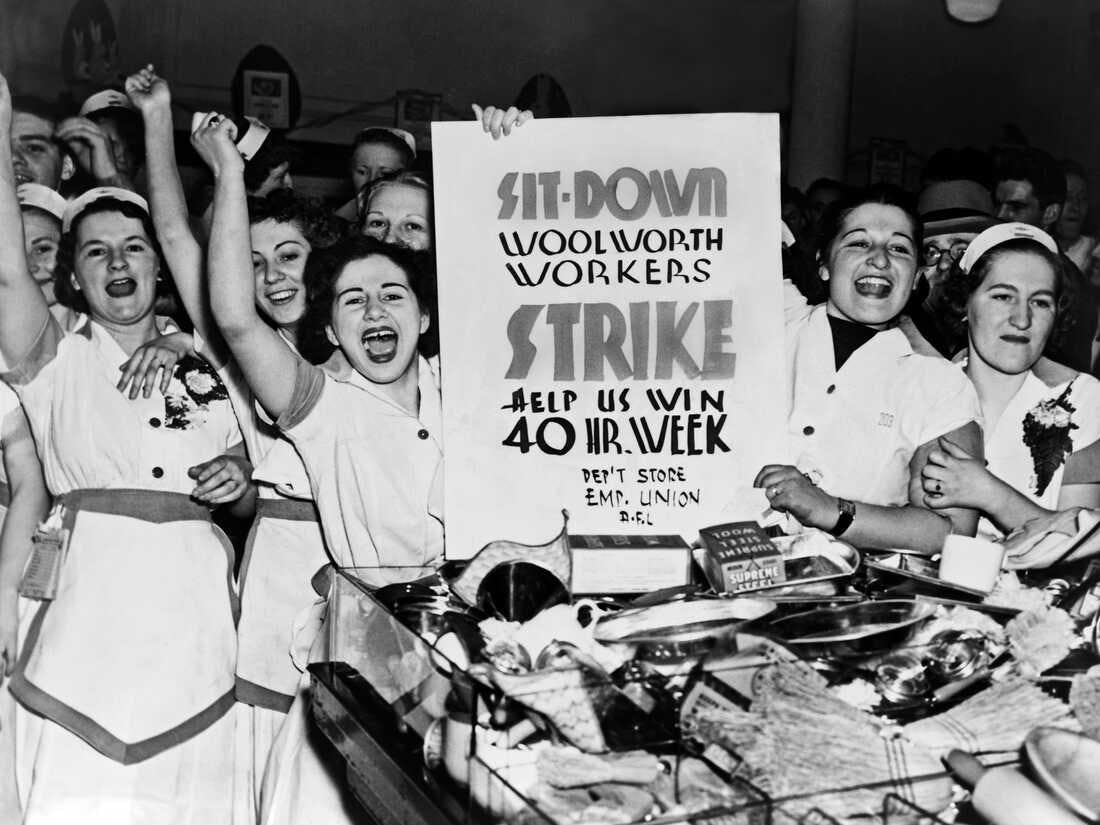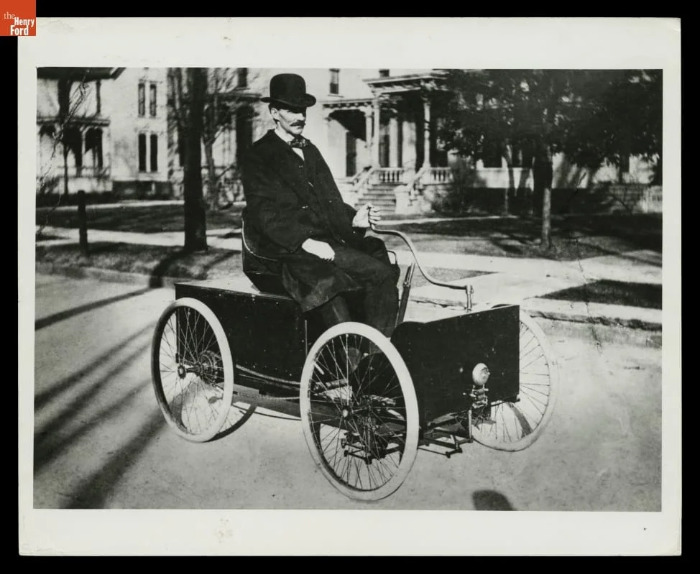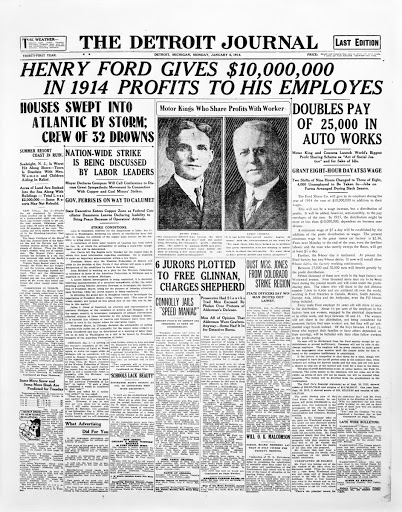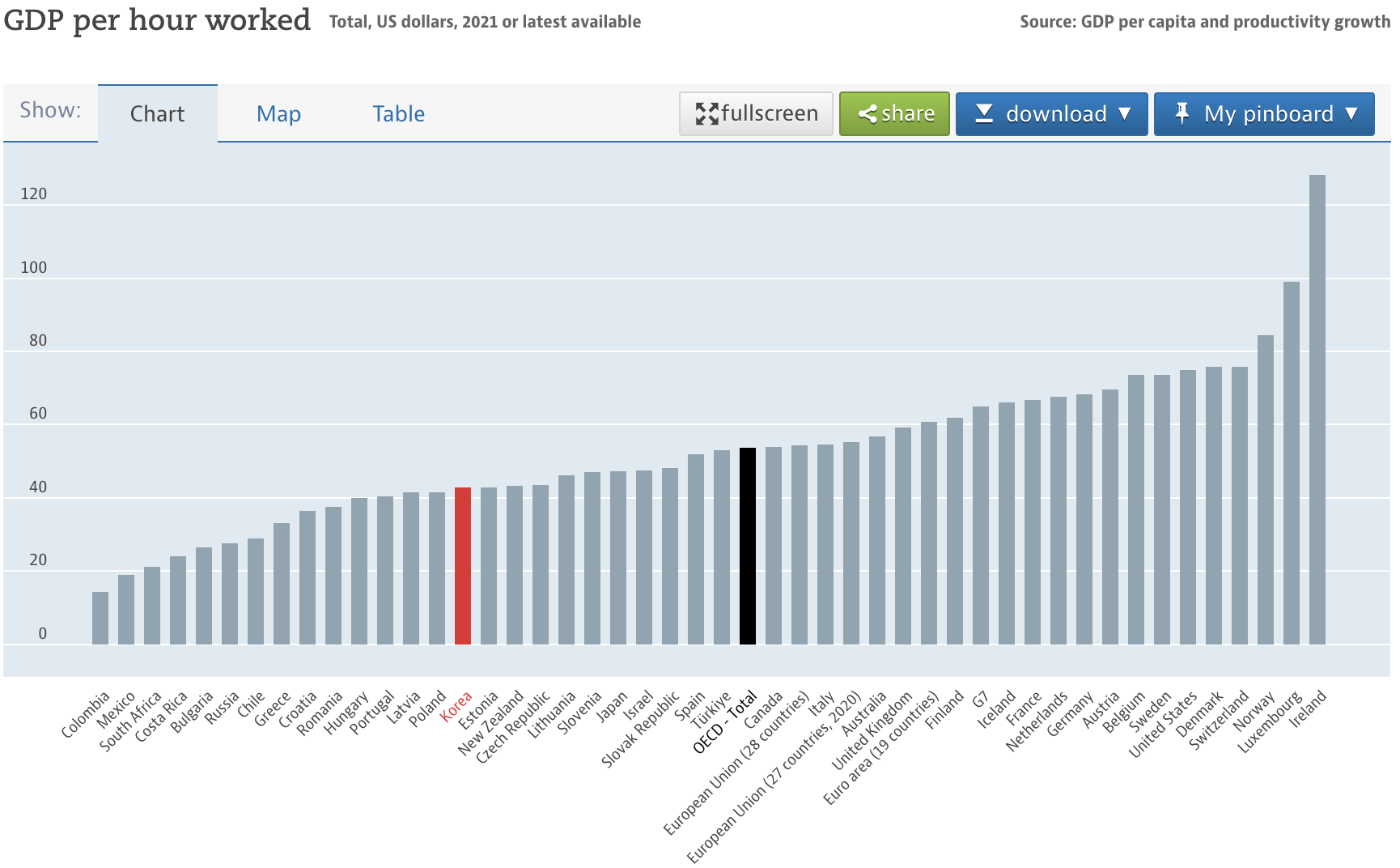
The [Past] of Work - part1. the 20th Century
20th Century Work: Mass Production, Conveyer Belt, and the 40hr workweek
1903 was the year Ford Motor Company was founded,
and the ModelT debuted in 1908. It was priced at $850, or about 18 months' salary for the average worker. Later, in 1925, the price was reduced to $300 at about four months' salary. And the Model T ushered in the automobile era for the people. (Source)
The work of the 20th century was manufacturing, and the work Henry Ford and his colleagues did was to mass-produce large, complex machines called automobiles.
They standardized products and optimized the manufacturing process around conveyor belts, increasing production efficiency and lowering unit costs. Words like productivity and cost efficiency have become too familiar nowadays, but at the time, this kind of 'scientific management'(footnote 1) was unheard of. The studies of business administration and industrial engineering were in their infancy.
Mass production worked magic. Before Henry Ford, automobiles were a toy for scientists or vanity for novelty. Ford's mass production made automobiles a means of transportation for the middle class.

Magic is an interdisciplinary art.
Henry Ford was an engineer (footnote 2) and a brilliant businessman (footnote 3), but above all, he had a tremendous impact on the lives of ordinary workers. In 1914, when there was no such thing as a minimum wage, he guaranteed a salary that was more than double the industry average ($20 an hour in today's dollars!). And in 1926, when 10-12 hour days and 6-day weeks were the norm, he introduced the 8-hour workday and 40-hour workweek.
Ford's seemingly irrational policies
were business decisions. Thanks to high and stable wages, Ford assembly line workers were second-to-none productive. Plus, the 8-hour workday allowed the factory to run three shifts for the full 24 hours a day while others ran two 10-12 hour shifts. Ford might have considered research that showed how workers lose their efficiency after eight working hours. With weekends, weekdays became more productive. The sales strategy of 'work harder if you want to hit the road on those weekends' was also successful.
Ford Motors soared during the post-World War I (1914-1918) golden age of the American economy.
This is not to say that Ford has done it all. The assembly line and the 40-hour workweek existed before him. He quickly read the wind change and embraced change at full force.
In any case, he understood his work and how to do it. (For the rest of the Ford story, see footnote 4)

We're still working the way people worked 100 years ago
In 1929, the Great Depression hit, causing mass unemployment,
and shorter work hours were counted as a solution. In 1933, the US Senate even passed a bill to mandate a 30-hour work week nationwide. But in 1938, President Roosevelt legalized (Fair Labor Standards Act) the minimum wage for the first time, and the 30-hour workweek was abandoned in favor of a 40-hour workweek. Yikes!
John Keynes wrote in 1930 in 'The Economic Opportunities of Our Grandchildren'
about the worries of our grandchildren. Technological progress is so rapid, and it absorbs all the need for human labor; they would work only three hours a day, 15 hours a week. What would they do with their lives? Well, No need to worry!
South Korea in 2023
is working the way how the people across the Pacific used to a century ago. When I was young, Saturdays were partial holidays, recognized only every other week. 2005 was the year that change began, and all the media were touting the economic dangers; I thought the national economy would collapse!
Korea is still a manufacturing-based economy. But why are we so focused on utilization rate rather than productivity? As a result, our labor productivity (GDP per hour) has always been at the bottom of the OECD rank, higher than Poland and lower than Estonia in 2021.

What work are we doing in the 21st century, and how should we do it?
That's one of my interests these days. So I've been doing some experiments with myself as a guinea pig. I'll share some of what I've found interesting in Part 2.
Thumbnail Image: Woolen mill workers striking for a 40-hour work week in 1937. Nationwide protests and strikes follow (Source: NPR)
Footnote 1: Scientific management is also called Taylorism after its founder, Frederic Taylor. This is a guy who, in addition to Fordism, has a -ism named after him!
Footnote 2: Ford worked as chief engineer for Thomas Edison's Edison Illuminating Companies in Detroit, and Edison is said to have been his mentor and friend. Related articles
Footnote 3: One of Henry Ford's quotes that inspires startup founders worldwide, including Apple's Steve Jobs, is, "If I had asked people what they wanted, they would have said faster horses.” (or not!) This can be interpreted as saying that you don't need any market research because the public is dumb or that digging deeper into the customers' real needs (faster transportation) is important.
Footnote 4: Ford is said to have insisted that the color of all cars be black (as long as it's black) to maximize production efficiency. (Actually, the Model T was available in several colors, but still!) Later, as GM created various distinctive cars with the mantra of a car for every purse and purpose', Ford became 'the past.'
feedback: @twinFin22
-fin
